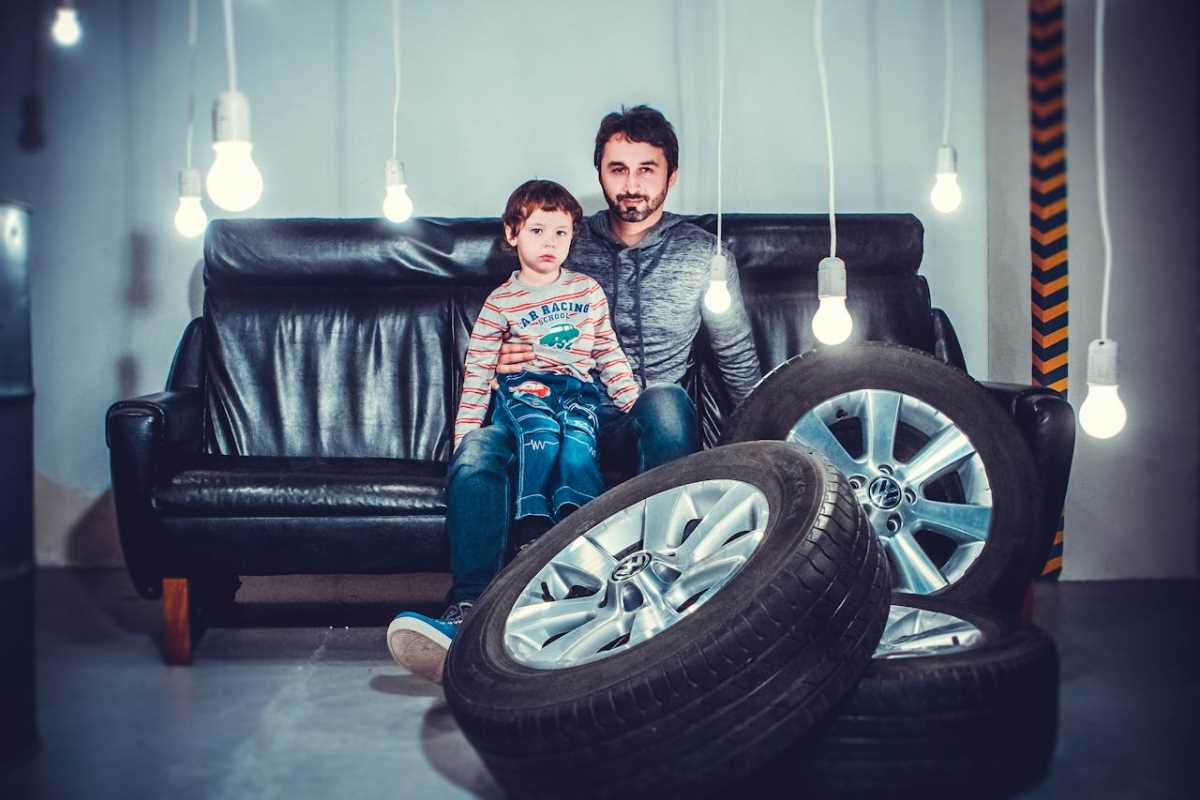Foggy, yellowed headlights are more than just an eyesore; they are a serious safety issue that can dim your visibility at night. Many people turn to quick fixes like toothpaste or bug spray, only to find the haze returning a few weeks later. The search for a lasting solution can feel frustrating. What you need is a method that addresses the root cause of the problem, not just the surface symptoms. This guide is here to show you that permanent fix. We will walk you through a professional-grade restoration process you can do at home, clearing up those cloudy lenses for good and helping you drive with confidence and clarity.
Why Do Headlights Get Foggy?
Understanding why your headlights become foggy is the first step toward fixing them permanently. Most modern headlight lenses are made from a durable plastic called polycarbonate. This material is strong and impact-resistant, but it has one major weakness: it's porous. To protect it, manufacturers apply a clear UV-protective coating at the factory.
Over time, this protective coating breaks down. The constant exposure to the sun's ultraviolet rays, road debris, harsh chemicals from car washes, and acid rain slowly wears it away. Once that coating is gone, the polycarbonate itself is exposed to the elements. The sun's UV rays cause the plastic to oxidize, which results in that familiar yellow, cloudy appearance.
Short-term "hacks" like using toothpaste or other mild abrasives simply polish the surface of the oxidized plastic. They don’t address the core problem, which is the missing protective layer. This is why the fogginess quickly returns. A permanent solution requires removing the damaged, oxidized layer of plastic and then applying a new, long-lasting UV-protective coating.
The Permanent Solution: Wet Sanding and Sealing
The most effective and lasting way to restore your headlights is a two-part process: wet sanding to remove the oxidation and applying a new clear coat to protect the plastic. This might sound intimidating, but it's a straightforward procedure that you can accomplish with a restoration kit or by purchasing the materials individually. This method directly addresses the root cause of foggy headlights, providing a crystal-clear finish that lasts for years, not weeks. We've got you covered with all the steps you need to get this done right.
Gathering Your Tools and Materials
Having everything you need on hand before you start will make the process much smoother. You can buy a comprehensive headlight restoration kit, which usually includes all the necessary sandpaper, polish, and sealant. Alternatively, you can buy the items separately from an automotive or hardware store.
Here’s your shopping list:
- Automotive Masking Tape: To protect the paint around your headlights.
- Assorted Grits of Waterproof Sandpaper: You'll need several sheets. Start with a coarse grit (like 800 or 1000), a medium grit (1500), and a fine grit (2000 or 3000).
- A Spray Bottle Filled with Water: For the wet sanding process.
- Microfiber Towels: You'll need a few clean, dry ones.
- Plastic Polishing Compound: This is used after sanding to refine the surface.
- UV-Protective Clear Coat: This is the most crucial part of the permanent fix. Look for a product specifically designed for automotive plastics that offers UV protection. An aerosol can is the easiest to use.
- Safety Glasses and Gloves: Always protect yourself when working on your car.
Your Step-by-Step Restoration Guide
With your supplies ready, it's time to bring those headlights back to life. Set aside about an hour or two for this project, and work in a shaded, well-ventilated area.
Step 1: Clean and Mask the Headlight Area
Start by thoroughly cleaning the headlights and the surrounding area with soap and water. Dry the area completely with a clean microfiber towel. Next, use automotive masking tape to carefully mask off the painted surfaces around the headlight. Apply several layers of tape to create a thick, protective barrier. This is a critical step, as it prevents the sandpaper from accidentally scratching your car’s paint.
Step 2: Begin Wet Sanding with the Coarsest Grit
Fill your spray bottle with water. Liberally spray both the headlight lens and your coarsest sheet of sandpaper (e.g., 1000-grit). Using firm, even pressure, begin sanding the entire surface of the headlight in a consistent, horizontal motion (side to side).
Keep the surface wet at all times by spraying it frequently. The water acts as a lubricant, preventing the sandpaper from clogging and carrying away the oxidized plastic particles. You will see a milky, yellowish slurry coming off the lens. This is a good sign; it means you are removing the damaged layer. Continue sanding until the entire lens has a uniform, frosted appearance and the yellowing is gone.
Step 3: Move to the Medium and Fine Grits
Once you are satisfied with the first pass, wipe the lens clean with a microfiber towel. Now, switch to your medium-grit sandpaper (e.g., 1500-grit). Spray the lens and the sandpaper with water again. This time, sand in the opposite direction—vertically (up and down). This cross-hatching pattern helps to remove the sanding marks from the previous grit. Continue until the lens has a finer, more uniform frosted look.
Wipe the lens clean one more time. Finally, repeat the process with your finest grit of sandpaper (e.g., 2000- or 3000-grit). Spray everything down with water and sand in a horizontal motion again. At this stage, the lens should start to look much clearer, although it will still be hazy. The goal is to create a smooth, prepped surface for polishing.
Step 4: Polish the Lens to Clarity
After the final sanding step, thoroughly clean and dry the headlight. Apply a small amount of plastic polishing compound to a clean microfiber towel. Using firm, circular motions, polish the entire lens. This process buffs out the fine scratches left by the sandpaper, bringing a high level of clarity back to the plastic. Continue polishing for several minutes until the lens looks as clear as possible. Wipe away any excess polish with a different clean towel.
Step 5: Final Cleaning and Preparation for Sealing
This is a vital step for ensuring the new clear coat adheres properly. Clean the polished lens with a degreasing agent, like rubbing alcohol. Apply the alcohol to a clean cloth and wipe the surface thoroughly to remove any remaining polish residue, oils, or contaminants. Let the lens air dry completely. Do not touch the surface with your bare hands after this step.
Step 6: Apply the UV-Protective Clear Coat
You’re now ready for the final, most important step. Shake your can of UV-protective clear coat for the time recommended on the label, usually about one minute.
Hold the can about 6-8 inches away from the headlight. Apply a light, even coat, using smooth, overlapping passes. Start spraying before the lens and stop after you’ve passed it to avoid drips. The first coat should be a light "tack" coat. Let it dry for about 5-10 minutes, or as directed by the product instructions.
Apply a second, "wetter" coat. This coat should be a bit heavier to ensure full coverage, but not so heavy that it runs or sags. Apply one more medium coat if needed. Three light-to-medium coats are generally better than one heavy coat.
Step 7: Let It Cure
The clear coat needs time to cure properly. Let the headlights dry untouched for at least an hour. For a full cure, most products recommend waiting 24 hours before driving the car or exposing it to moisture. After 24 hours, you can carefully remove the masking tape. It's also wise to wait about a week before washing the car.
Enjoy Your Permanently Clear Headlights
This method provides a durable, long-lasting solution that will keep your headlights shining bright for years to come. You have not only improved the appearance of your vehicle but also made your nighttime driving significantly safer. It’s a project that offers a huge return on your effort, giving you a great sense of accomplishment and a clear view of the road ahead.
 (Image via
(Image via





